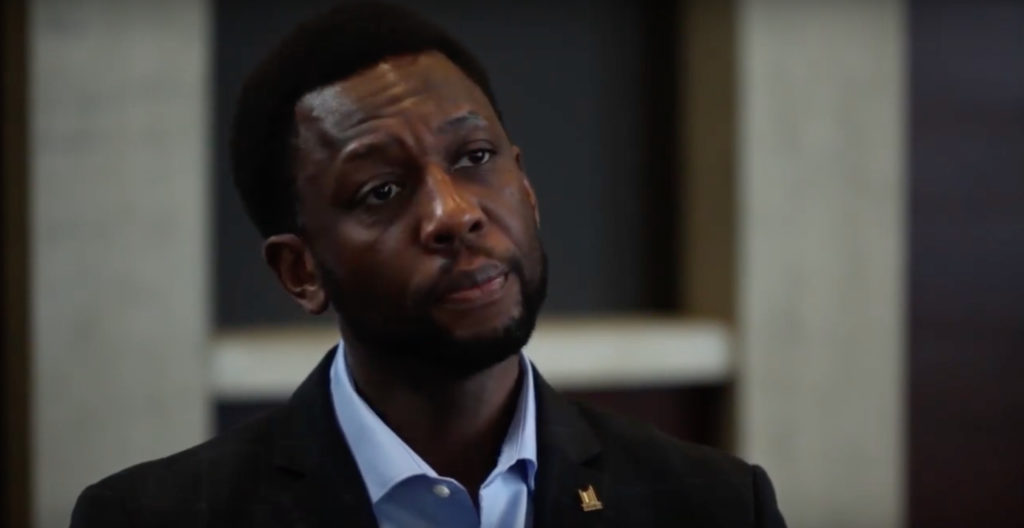
Toronto’s recently appointed Chief Technology Officer outlined his plan to ensure cybersecurity in the city while focusing on using emerging technologies to benefit citizens.
The City of Toronto announced that Lawrence Eta would serve as its Chief Technology Officer (CTO) starting October 1st.
Eta previously served as the Deputy Chief Information Officer for the City of Toronto. During his time in this role, he helped establish Toronto’s cybersecurity program. He also led the implementation of security awareness training and internal instant messaging.
The government worker of two years says that his team will focus on the ability to enable and evolve the city technologically in the upcoming years.
“My role is focused on aligning the technology vision, moving the city into more digital services, and ensuring that we’re looking at emerging technologies,” Eta told MobileSyrup during an interview.
Ensuring cybersecurity
Eta says that one of the main objectives is to ensure cybersecurity and educate people and businesses on the topic. In order to achieve this, his team appointed the first chief information security officer who will help achieve a digital-first model that prioritizes cybersecurity.
The Chief Technology Officer says the city needs to move away from thinking about cybersecurity simply as a technology issue. According to Eta, cybersecurity should be seen as something that compliments businesses and not something that is a separate factor.
“Cybersecurity is now no longer just about technology. It’s about risk,” he explained.
It is also about the risk that a corporation faces, Eta said. He added that to implement this shift of thinking, it is necessary to have mandatory cybersecurity awareness and that additionally, there will need to be more threat analyses and vulnerability assessments.
The main thing is to make “the city realize that cybersecurity is not just a technology issue, it’s a business issue,” Eta stated.
Using emerging technologies
Eta spoke about how new technologies like artificial intelligence can be used to solve several social problems in the city. This could include the use of AI to solve issues like homelessness, as well as housing affordability for the general population.
So for example, Eta said that AI could be used to review the cause of homelessness in the city. The data reviewed would use machine-learning to identify patterns with help from data scientists and domain experts.
Further, the Chief Technology Officer believes that data could also be used in a similar fashion to predict where the city should be putting its investments for various endeavours and projects. This includes capital investments, and also touches on how the city prioritizes resources based on social outcomes.
The city could “link the data to translate what is predictive, and see where we can make our investments. It’s not reactive, but proactive,” he said.
To do this, the city will have to work to make data more accessible to solve problems within Toronto and the surrounding cities.
For instance, Toronto’s Open Data team launched a civic issues campaign earlier this year, which aims to help identify and facilitate the release of data linked to the city’s five priority areas. The priority areas include poverty, climate change, fiscal responsibility, mobility and affordable housing.
The Open Data team is currently analyzing the responses collected during the campaign and will be released on Toronto’s Open Data Portal in the near future.
Moving forward
Eta says that one of the next steps is to make research and development the core of matters and solutions. The Chief Technology Officer says that although this step is currently present, it needs to be more prevalent to allow the city to evolve further.
Next, he said that we need to look at how the city is using technology to benefit specific communities. He mentioned that one of the new technologies that could be helpful such as 5G, the next iteration of mobile network technology.
The next generation of network connectivity has not fully arrived in Canada yet but is likely going to launch sometime in 2021. When it does arrive, governments and companies will be looking to benefit from the technology.
Eta says we need to “look at areas of technology like the movement of 5G, and see how can we use that to improve broadband connectivity of areas that may be disadvantaged.”
Ensuring that the city is improving its partnership with the public and private sector along with academia is also one of the next steps for Toronto, Eta says.
The city plans on improving these partnerships by sharing Toronto’s priorities and seeking engagement to help solve issues.
Image credit: Youtube [Screenshot]
MobileSyrup may earn a commission from purchases made via our links, which helps fund the journalism we provide free on our website. These links do not influence our editorial content. Support us here.



